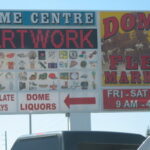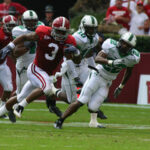Antique Sign Collectors Pay Top Dollar for Porcelain Signs
I have been in the Antique business for over 20 years, in this time I have owned shops, attended antique shows and flea markets, and sold rare collectibles on-line. I follow the trends in the business, and find it fulfilling to share these trends with yahoo readers. There has been resurgence in the antique business over the last 5 years due to TV shows like American Pickers and Pawn Stars. Antique porcealin signs are a hot commodity and it seems that these signs not only hold a historical value to the collector, but these signs represent art to more than a handful of collectors.
Porcelain built to last…
Antique signs have been around in America since the shopkeeper has been in business; early crude signs even painted on wood, advertising things like soap, cobbling, cigars etc. are highly prized by collectors. Porcelain signs are treasured by collectors and dotted the landscape of America since about 1900. Many companies used this form of media to advertise their business; these signs were mainly chain hung outside the business either on poles or on the side of a building. Porcelain was touted as a product that would last a hundred years and withstand the brutal punishment brought on by inclement weather.
Advertising to the Masses…
There are too many types of porcelain signs to list here; they come in every shape and size. Gas Stations and Oil Companies, Cigarette, Soda Pop, and about every company that sold a product used these signs to advertise their wares or service. The Signs usually contained all of the information about the company, as well as their logo and sometimes a catch phrase. A great example of this medium is The Sherwin Williams Paint Company that advertises on their highly sought after porcelain sign, “Cover the Earth” as a paint can is dumped and drips over the earth with vibrant color and eye appeal. Depending on the location of the sign literally thousands of potential consumers would pass by these signs on a daily basis, promoting the company thru this form of advertising.
They Disappear during WW2…
During WW2 the iron used to make porcelain signs was in high demand, and needed in the war effort, these metals became scarce as well as the labor involved to produce these signs became expensive, forcing sign companies to explore new avenues and materials to produce their product. Different metals such as tin and steal were used to produce advertising signs, the results were lower quality and less eye appeal. Porcelain signs are still produced today, but on a very limited basis.
Introduction into Pop Culture…
During the early 1990’s before all the TV show hype and even before the Internet auction sites brought antiques to your door, the sign collecting era was born. Commercial Decorators in the early 1990’s started applying this “Man Art” to the interior walls at such famous restaurants as Portillo’s and Fuddruckers, just to name a few. These signs became the Picasso’s of the Blue Collar gentleman, and they started appearing on garage walls and recreation rooms. Porcelain signs are market hot, and some collectors are willing to pay thousands of dollars to own their part of this relatively new art world.
Porcelain signs Net huge dollars at Auction…
Recently at auction, a Oldsmobile double-sided porcelain “Rocket” sign, used to advertise their “rocket” engines, sold for $6,050 at an auction held Nov. 23-25 in Illinois. A Street sign from the New York Stock Exchange, from the early 20th century, fetched $116, 500 at a recent auction in New York. A recent stroll around the auction powerhouse E-Bay found 6,267 current auctions listed under keyword “porcelain sign” with the top price starting at $200,000 for a Porcelain Neon Mopar sign. I would much rather spend an afternoon at restaurants, garages, and man-caves looking at advertising history, then spend an afternoon at an art show.




